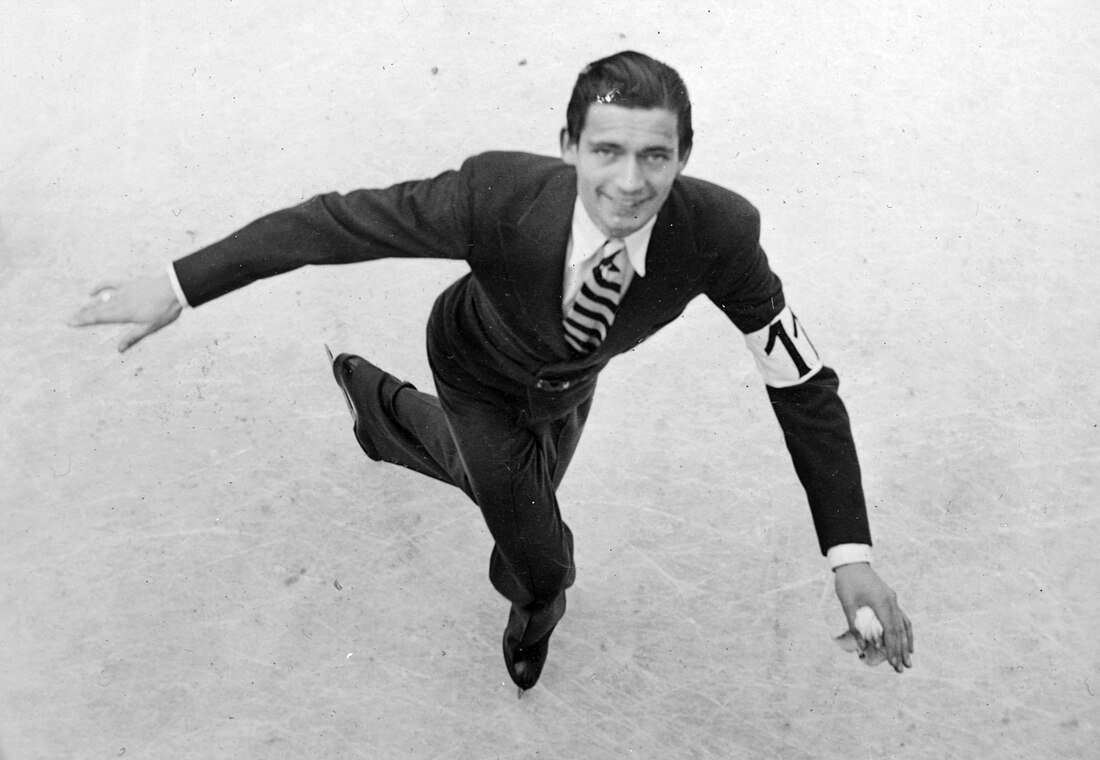Top Qs
Timeline
Chat
Perspective
Ede Király
Hungarian figure skater (1926–2009) From Wikipedia, the free encyclopedia
Remove ads
Ede Király (23 February 1926 – 10 August 2009)[1][2] was a Hungarian figure skater who competed both in men's singles and pairs. As a competitor in men's singles, he was a three-time World medalist (silver in 1949 and 1950, bronze in 1948), the 1950 European champion, and a six-time Hungarian national champion. Competing in pairs with Andrea Kékesy, he became the 1948 Olympic silver medalist, the 1949 World champion, and a two-time European champion (1948–1949). In 1950, he defected from Hungary and worked as a coach and engineer in Canada.
Remove ads
Competitive career
Summarize
Perspective
Király's international career lasted only three years. It included two years where he had the unusual accomplishment of winning World medals in both men's singles and pairs.[3] He was coached by Arnold Gerschwiler.[4]
In 1948, he placed fourth at the European Championships in singles skating and won gold with Kékesy in pairs. In February, at the 1948 Winter Olympics, he placed fifth in singles and won silver in pairs. The week after, at the 1948 World Championships, he and Kékesy won silver again, and he won bronze individually.[3]
The next year, he and Kékesy won a second European title, and he placed second in the men's singles event. At the 1949 World Championships, he won an individual silver, and he and Kékesy became World champions.[3]
Király's last year competing was 1950, where he only skated in men's singles and became the 1950 European champion. At the World Championships, he won a second silver medal.[3]
After the close of the championships, Király was friendly with the Hungarian ambassador, who held a reception for the competitors, but then went to the London Home Office and defected from communist Hungary.[5] Király said that he feared returning to Hungary, as he refused to join the Hungarian Communist Party, and that his passport and other papers were being held by a Hungarian intelligence officer.[6][7] His family in Hungary, as well as another coach of his, Rudolf Dillinger, were arrested in response. Hungarian figure skaters were also not allowed to compete in the 1951 European and World Championships.[8]
Remove ads
Post-skating career
In 1950, Király graduated from the Technical University of Budapest. After defecting from Hungary, he moved to Canada and became a coach in Oshawa, Ontario; he also worked as an engineer.[2] His students included Donald Jackson.[9] He returned to Hungary several times later in his life.[2]
Results
Men's singles
Pairs with Kékesy
References
External links
Navigation
Wikiwand - on
Seamless Wikipedia browsing. On steroids.
Remove ads

